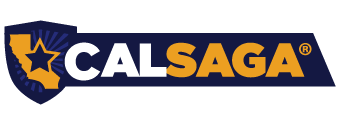Achieve Business Objectives with Effective Performance Counseling Techniques
Anne Laguzza, The Works Consulting, CALSAGA Network Partner
The key to increased productivity and efficiency is in asking.
Asking is one key element of effective performance counseling techniques that help leaders achieve business objectives.
Picture this: You oversee an employee who is not accomplishing all their required tasks and not completely following post orders. This is becoming an issue as the employee’s behavior is not aligning with the company’s values, and productivity and efficiency are decreasing.
When this happens it’s easy for leaders to assume they know why this is happening – the employee must be distracted or using their time incorrectly. But, what happens when you ask before you assume?
This scenario happened recently with a security company I work with, and the solution ended up being easier than they thought!
The leader scheduled a meeting with the employee, and then, prepared by using our Employee Performance Counseling checklist. (Download our FREE checklist here.) During the meeting, the leader reviewed expectations, stated their concerns and then asked why this was happening. The employee disclosed that they felt overwhelmed and had too many things on their plate. They hadn’t complained or mentioned it because they felt responsible for figuring it out on their own.
Once the leader understood the challenge, they were able to work through the employee’s to-do list and collaborate on solutions that worked for both the leader and the employee. The leader then continued to monitor their performance and check in, providing feedback and coaching consistently.
Long-term results? The employee’s performance improved, and they showed pride in doing the right thing. Productivity and efficiency increased, and business objectives were achieved.
This is effective performance counseling in action.
Every leader can apply these techniques and reap the benefits by following these 4 steps:
- Set clear expectations and goals
- For example, you might have a company-wide expectation that states: “We want officers that are reliable, honest and customer service oriented.” When you have a conversation with a low performer, you can individualize this expectation to address specific concerns: “The expectation is that all our officers are reliable. You have been repeatedly late and I need you to report to work on time for the next 3 shifts.”
- Monitoring and measuring performance
- Telling an employee something once, training them once – doing anything once – is likely not going to stick. You as their leader will need to monitor and determine how they are doing. And you likely are going to need to repeat yourself more than once.
- Providing feedback and coaching
- Every employee should be trained, given an opportunity to perform/improve and have their performance evaluated more often than once a year or only when things are going wrong. When you notice performance is not meeting expectations, you schedule a meeting and ask why. Additionally, on a consistent basis, you should be meeting with your employees to tell them what they are doing well and that you value them on your team. Most leaders spend more time telling someone what they are doing wrong than what they are doing right.
- Evaluating and improving performance
- This looks like giving every employee ongoing regular feedback (positive and negative) and evaluating how they are progressing .
Once you complete step 4, it’s time to start the cycle again!
After implementing performance counseling techniques, some organizations have reported a 10-30% increase in productivity and efficiency (these numbers are highly dependent on the situation and what is being measured). Consistently, it is reported that it DOES have a positive impact overall.
Employees who receive performance counseling want to come to work – they feel PRIDE when they put on their uniform or show up at your office. They want to do the right thing for the company because they care. They call in sick less, make less mistakes and have less injuries.
When employees know the boundaries and expectations, they are more likely to stay and feel happier at their jobs because they understand the parameters. This is often exactly the opposite of what leaders think. Employees report that they feel safer in an environment that is clearly defined and leaders provide them with feedback that helps them meet expectations.
From officers to admin staff, every employee can benefit from performance counseling. And, leaders benefit from achieving business objectives.
Need more help improving employee productivity and efficiency? Email Anne at solutions@theworksconsulting.com.
 Anne Laguzza is the CEO of The Works Consulting, a CALSAGA Network Partner. As a seasoned business executive with human resources management, leadership development, and performance coaching experience, Anne works with clients from a variety of industries to develop better systems, maximize employee productivity, and enable management to focus on business growth. For more information, check out theworksconsulting.com or email anne@theworksconsulting.com. You can also find Anne on Instagram and LinkedIn.
Anne Laguzza is the CEO of The Works Consulting, a CALSAGA Network Partner. As a seasoned business executive with human resources management, leadership development, and performance coaching experience, Anne works with clients from a variety of industries to develop better systems, maximize employee productivity, and enable management to focus on business growth. For more information, check out theworksconsulting.com or email anne@theworksconsulting.com. You can also find Anne on Instagram and LinkedIn.
